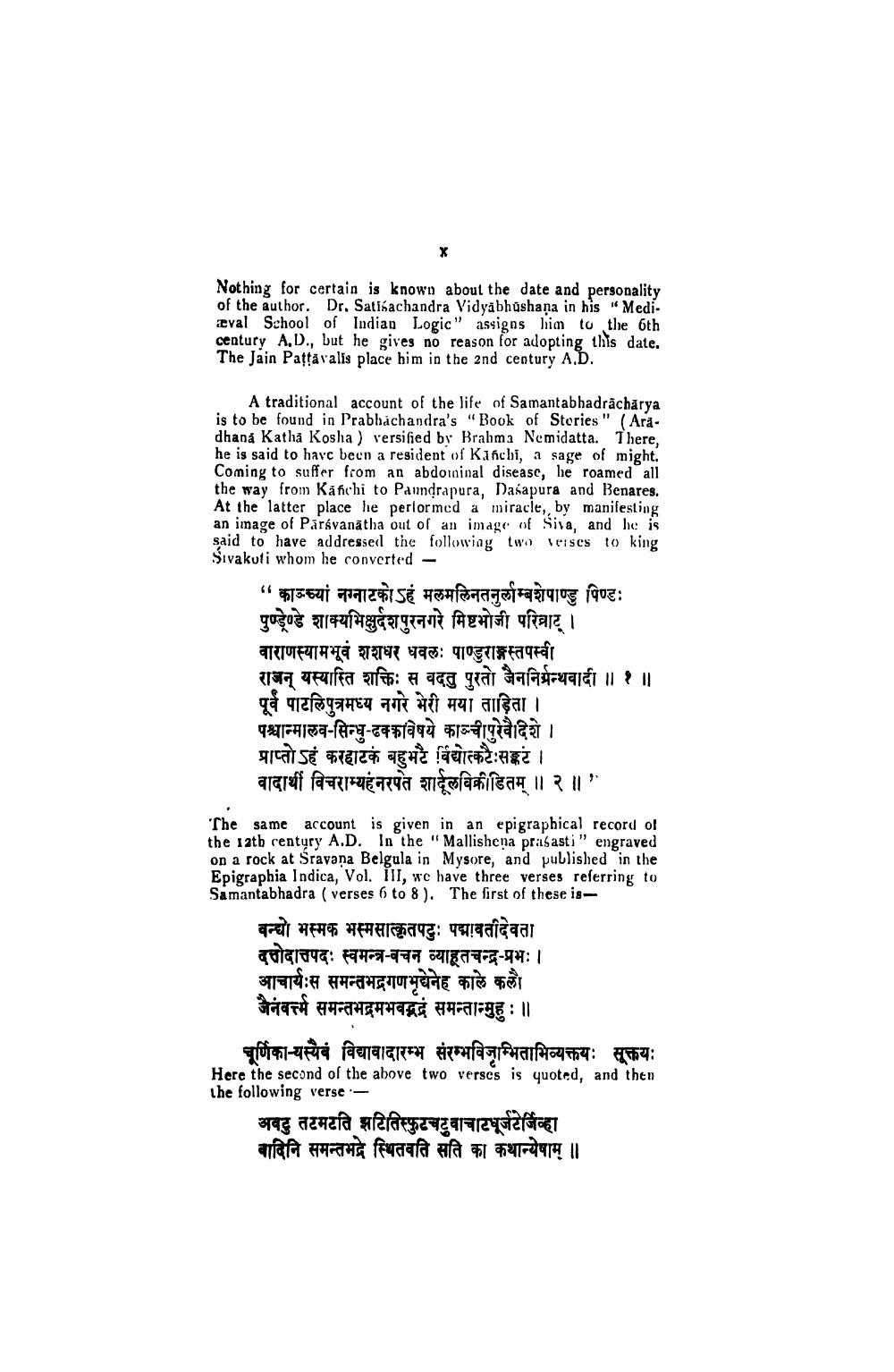________________
Nothing for certain is known about the date and personality of the author. Dr. Satisachandra Vidyabhushana in his "Medieval School of Indian Logic" assigns him to the 6th century A.D., but he gives no reason for adopting this date. The Jain Pattavalis place him in the 2nd century A.D.
A traditional account of the life of Samantabhadracharya is to be found in Prabhachandra's "Book of Stories" (Aradhana Katha Kosha) versified by Brahma Nemidatta. There. he is said to have been a resident of Kanchi, a sage of might Coming to suffer from an abdominal disease, le roamed all the way from Kanchi to Paindrapura, Dabapura and Benares. At the latter place he perlormed a miracle,, by manifesting an image of Parsvanatha out of an image of Siva, and he is said to have addressed the following two verses to king Sivakuti whom he converted -
" काञ्च्यां नग्नाटकोऽहं मलमलिनतनुर्लाम्बशेपाण्डु पिण्डः पुण्ड्रेण्डे शाक्यभिक्षुर्दशपुरनगरे मिष्टभोजी परिव्राट् । वाराणस्यामभूवं शशधर धवलः पाण्डुराजस्तपस्वी राजन् यस्यास्ति शक्तिः स वदतु पुरतो जैननिर्मन्थवादी ॥ १ ॥ पूर्व पाटलिपुत्रमध्य नगरे मेरी मया ताड़िता । पश्चान्मालव-सिन्धु-ढक्कविषये काञ्चीपुरेवैदिशे । प्राप्तोऽहं करहाटकं बहुभटै विद्योत्कटैःसङ्कटं । वादार्थी विचराम्यहनरपत शार्दूलविक्रीडितम् ॥ २॥"
The same account is given in an epigraphical record of the 12th century A.D. In the "Mallishena prasasti" engraved on a rock at Sravana Belgula in Mysore, and published in the Epigraphia Indica, Vol. III, we have three verses referring to Samantabhadra ( verses 6 to8). The first of these is
बन्यो भस्मक भस्मसात्कृतपटुः पद्मावतीदेवता दचोदात्तपदः स्वमन्त्र-वचन व्याहूतचन्द्र-प्रभः । आचार्यःस समन्तभद्रगणभृद्येनेह काले कलौ
जैनवर्त्म समन्तभद्रमभवद्भद्रं समन्तान्मुहुः॥
चूर्णिका-यस्यैवं विद्यावादारम्भ संरम्भविजृम्भिताभिव्यक्तयः सूक्तयः Here the second of the above two verses is quoted, and then the following verse'
अवटु तटमटति झटितिस्फुटचटुवाचाटधूर्जटेर्जिव्हा बादिनि समन्तभद्रे स्थितवति सति का कथान्येषाम् ॥




